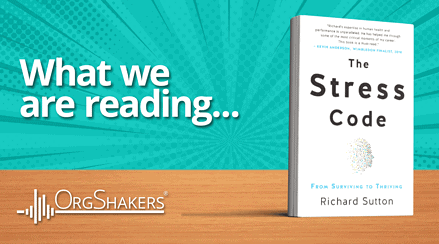Menu

How Employers Can Prepare for SAD Season
With the clocks having gone back in the US this past weekend – and the clocks having already rolled back two weekends ago in the UK – we are officially entering into SAD season.
For those that might not know, SAD stands for Seasonal Affective Disorder, which is a type of depression that comes and goes seasonally. Symptoms of this disorder include low energy, difficulty concentrating, irritability, changes in sleep and appetite, and a general feeling of sadness or despair – all things that can have noticeable ripple effects in the workplace.
Around 3% of people in the UK have SAD, and about 5% of people in the US – with symptoms being thought to last about 40% of the year. It’s highly likely that employers will find they have team members who suffer with SAD – or, to a lesser extent, with the ‘winter blues’ that the darker and colder days can bring. But there are a few things they can do to help ward off the effects that SAD can have on mental health, engagement, and productivity:
- Raise Awareness – awareness is the first step in supporting employees. Recognize that SAD is a genuine, diagnosable condition and communicate empathy and understanding. When employees feel that their struggles are recognized, they are more likely to seek support and feel empowered to manage their condition.
- Flexible Working – flexibility can be invaluable for employees dealing with SAD. The symptoms of SAD, such as fatigue and difficulty concentrating, can make a traditional 9-5 schedule challenging to operate to. Providing flexibility allows employees to manage their workload during times when they feel most energized, which can vary significantly with this disorder.
- Improve Office Lighting – since a lack of natural sunlight can trigger SAD symptoms, lighting adjustments in the office can be a great practical solution. Employers can make simple changes to the office environment to help ease symptoms for those affected, such as purchasing some sunlight lamps which more closely mimic natural light.
- Physical and Mental Health Support – lifestyle habits can influence the severity of SAD symptoms, so employers should consider promoting wellness initiatives that encourage a healthy lifestyle. These could include office fitness programs, subsidised gym memberships, or mindfulness sessions. As well as this, it’s also important to remind employees of the mental health support that is available to them to, such as their Employee Assistance Program.
- Check In Regularly – an essential part of supporting employees with SAD is regular communication. While it’s important not to intrude, checking in with employees can give them an opportunity to share their experiences and needs. At the same time, it also gives employers the opportunity to get feedback on the support that they are offering to measure how effective it is.
The important thing to remember is that supporting employees with Seasonal Affective Disorder is about more than just providing resources; it’s about creating an environment where people feel safe, understood, and empowered. This will help to alleviate the symptoms of this disorder during these darker months and have positive effects on both the employee and the business.
If you would like to discuss how we can help create and implement support strategies this SAD season, please get in touch with us today!



